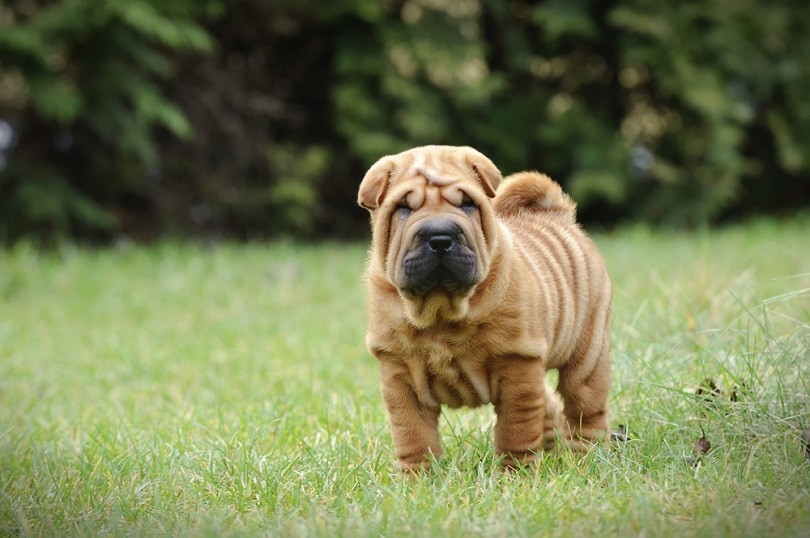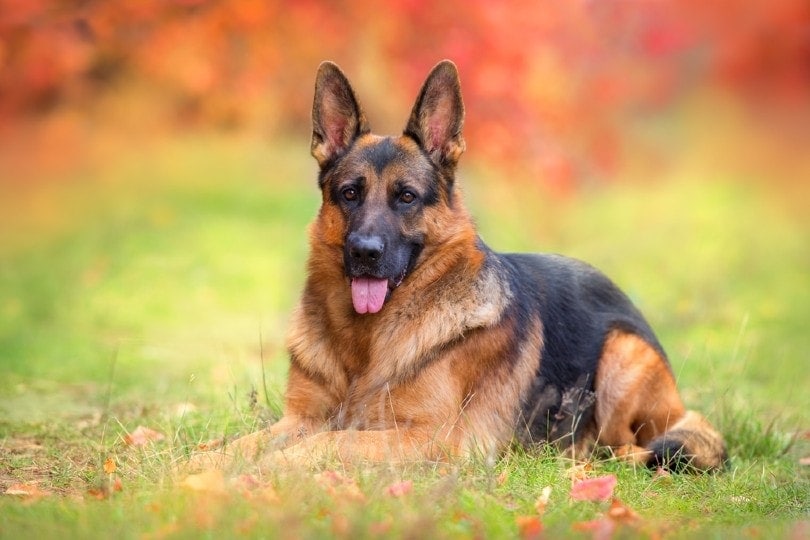Tan Pit Bull: Pictures, Facts & History (With Pictures)
By Kit Copson
Updated on
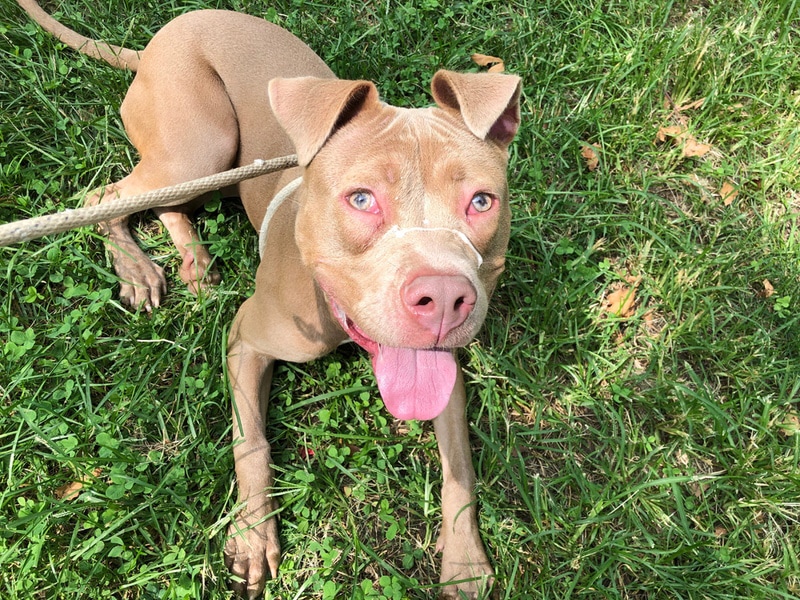
It’s a common mistake to consider Pit Bulls a certain breed of dog. On the contrary, the term “Pit Bull” does not describe a specific breed, but rather describes mostly mixed-breed dogs with traits that fit a certain ideal, like a large, broad head and chest, muscular physique, short coat, and thick-set, stocky body.
The Pit Bull is not recognized as a breed by the American Kennel Club. Some specific breeds, however, like the American Staffordshire Terrier, the American Pit Bull Terrier, the American Bully, and the Staffordshire Bull Terrier, are often categorized as “Pit Bull types”, though, according to The Animal Foundation, this is a misidentification.
Pit bull-type dogs can have many different coat colors, including tan—a color that comes about as a result of phaeomelanin. Some breeds present with tan markings, whereas for others, tan coloration makes up part of a coat color combination, like black tan & white.
If you have or are thinking of welcoming a tan Pit Bull into your life and are curious about the history of these dogs, this post shares all you need to know.
| Height: | 14 – 21 inches (may vary) |
| Weight: | 30 – 60 lbs (may vary) |
| Lifespan: | 10 – 15 years |
| Colors: | Black, brown, brindle, tan, fawn, blue, gray, red, white, tricolor, liver, buckskin |
| Suitable for: | Experienced and loving owners |
| Temperament: | Friendly, loving, protective, loyal, energetic, playful |
Since the term “Pit Bull” typically refers to mixed-breed dogs that descend from various breeds, it can be hard to predict exactly how large they will be, but a standard height and weight range is between 14 and 21 inches and 30 and 60 pounds. Females are likely to be smaller than males.
A well-socialized Pit Bull, whether mixed-breed or one of the so-called “bully breeds”, is one of the friendliest, most loyal, and fun-loving dogs you could ever meet, but this depends on numerous factors, including the parentage, training, and how positive their experiences with people and other animals have been.
Tan Pit Bull Breed Characteristics
The Earliest Records of Tan Pit Bulls in History
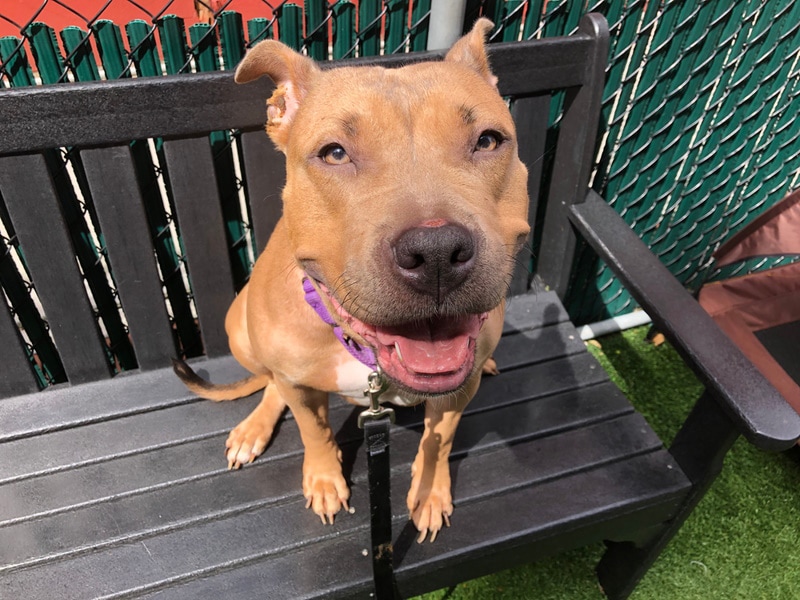
The Pit Bull’s ancestors originated in the United Kingdom. The dogs referred to as “Pit Bulls” today descend from dogs that were first bred for blood sports like bull and rat baiting in or prior to the early 19th century. Their ancestors were bulldogs and terriers—dogs that have been linked to hunting and blood sports throughout history.
Though viewed as abominably cruel today, in the early 19th century, blood sports were regarded as a popular form of entertainment and a distraction from the hardships of daily life. When bull baiting was outlawed in 1835, another blood sport called “ratting” started to grow in popularity. Dogs used in ratting were placed in a pit (hence the term “pit bull”) and set upon rats to see how many they could kill in a certain amount of time.
The dogs bred for these blood sports were crosses between Bulldogs and Terriers to enhance traits like fearlessness and agility. Though these dogs were expected to be killers in the pit, they were developed not to be non-aggressive toward humans. This was done to make the pit dogs easier to handle.
How Tan Pit Bulls Gained Popularity
Though Pit Bulls were initially popular blood sport dogs, their roles became much more diverse when they were first imported into America in the 19th century. Due to their strong work ethic and determination, Pit Bulls were given multiple jobs on farms, like herding cattle and sheep and protecting them from predators.
They were also used to guard people and their property thanks to their fierce loyalty and protective natures. At the same time, people were starting to recognize certain traits that made the Pit Bull a family-friendly dog, like strong affection for their humans, friendliness toward children, and protective instincts. These traits soon made pit bulls much-loved companion dogs as well as working dogs, especially among the working classes.
Pit Bulls even went on to serve the U.S. military during both WWI and WW2, both in combat and as a national mascot as an image of courage, tenacity, hard work, and loyalty.
Formal Recognition of the Tan Pit Bull
Pit Bulls are not recognized by the American Kennel Club as a breed since the term “pit bull” does not refer to a specific breed, but rather to dogs with certain physical characteristics. A study of pit bull-type dogs in animal shelters revealed that 98% of the dogs were mixed breeds.
However, certain breeds sometimes labeled as “Pit Bulls” or “Pit Bull types” are accepted by the AKC and/or other kennel clubs, like the American Staffordshire Terrier, which was recognized by the AKC in 1936, and the American Pit Bull Terrier, which was recognized by the United Kennel Club in 1898.
Top 4 Unique Facts About Tan Pit Bulls
1. Tan Pit Bulls Aren’t That Common
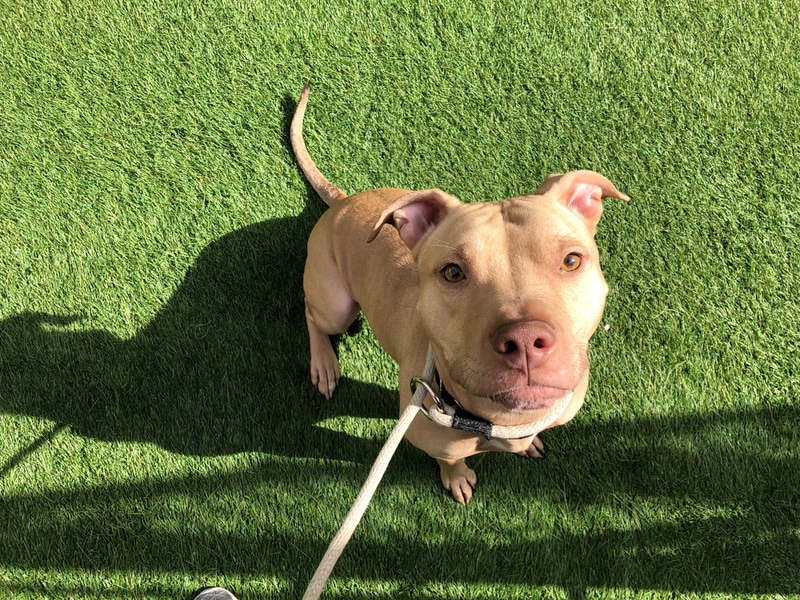
Phaeomelanin is the pigment responsible for a tan-colored coat, which is a sort of beige-brown color. White markings and points may also be present. It’s not the rarest Pit Bull color, but it isn’t all that common, either.
2. A Pit Bull Became a Decorated War Hero
A Pit Bull called Sergeant Stubby served during the First World War, and, as his name gives away, he was genuinely promoted to the position of Sergeant for his efforts. Soldiers found Sergeant Stubby when he was a stray roaming the streets of Connecticut, and he is now one of the most famous dogs in history. His exact breed was unknown, but, by all accounts, he was a very sweet dog.
3. Many Dogs Are Misidentified as Pit Bulls
Certain breeds are often referred to as “Pit Bulls”, but researchers exploring Pit Bull DNA at an animal shelter found that 98% of the Pit Bull types were mixed breeds. Moreover, it was found that 62% had less than 50% DNA from breeds commonly labeled as Pit Bulls (i.e. American Staffordshire Terrier, American Pit Bull Terrier, etc.).
4. Pit Bulls Can Be Wonderful Family Dogs
In spite of the controversy surrounding pit bulls, well-socialized Pit Bulls make fantastic family dogs due to their affectionate, friendly, and outgoing personalities.
Does a Tan Pit Bull Make a Good Pet?

Under the right circumstances, a Pit Bull, like any other breed, thrives in a loving family home. There are many misconceptions surrounding Pit Bulls—particularly that they are inherently aggressive—but this is not the case.
As the ASPCA explains, most Pit Bull-type dogs are likely “the result of random breeding”, and this lack of regulation means that sometimes, behavioral issues are passed down through generations. Environmental factors also come into play alongside genetics.
For example, if a Pit Bull is abused or doesn’t get much human interaction at a young age, they become more likely to react aggressively out of fear or stress, but this isn’t unique to Pit Bulls—it can happen to any dog of any breed.
To truly know an individual Pit Bull’s temperament, you have to get to know that Pit Bull for who they are rather than making a decision based on what you’ve heard about the breed as a whole.
It’s hugely important to socialize your Pit Bull and provide them with plenty of positive experiences with people and dogs from a young age. Their high energy levels and strength mean some pit bulls may not be well-suited to a first-time owner and may be better placed with someone with experience training and socializing dogs.
If you plan on adopting an adult pit bull, get as much information as you can from the shelter staff and spend as much time as you can getting to know the Pit Bull as an individual before you decide whether you’re a good fit for each other. Happy, well-adjusted, and well-cared-for Pit Bulls are playful, curious, energetic, and friendly toward family, children, and even strangers they meet while out and about.
Wrapping Up
A lot of confusion surrounds Pit Bulls due to a lack of knowledge and understanding of the term. Once used to refer to dogs used in blood sports like bull and rat baiting, “Pit Bull” is today a term used to describe dogs that look a certain way—more often than not, mixed breed dogs with characteristics considered “Pit Bull-like”.
Despite the controversy surrounding Pit Bulls and fears about aggression, Pit Bulls were not originally bred to be aggressive toward humans and many are much-loved and loving family members in homes around the world today.
See Also:
- Bichon Pitbull Mix: Pictures, Care Guide, Temperament & Traits
- 100+ Hiking Dog Names: Ideas for Brisk & Outdoorsy Dogs
Featured Image Credit: Potter1981, Shutterstock


